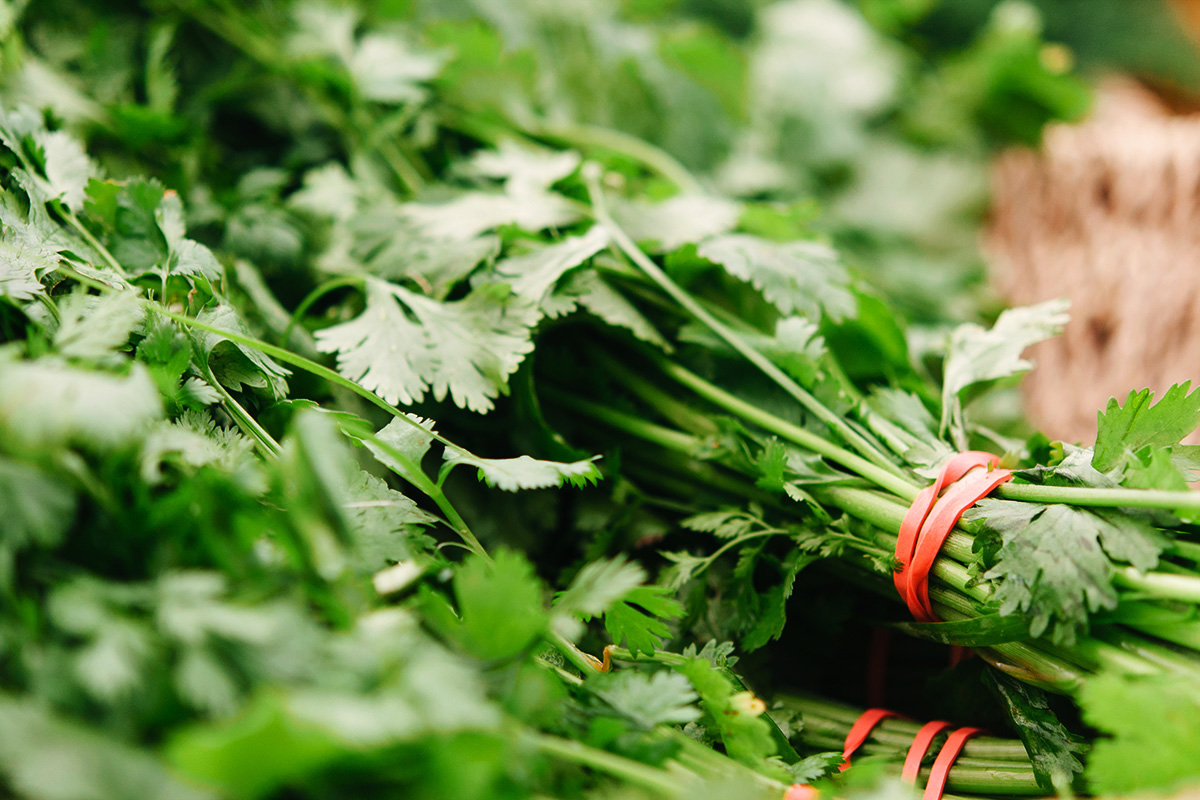Think about your favorite food. No, really think about it. Close your eyes and think through the whole process of anticipating, picking up, biting down, chewing, tasting and swallowing it. Pretty great, right?
Now think about your favorite food from childhood. Is it the same? If not, how is it different from your current favorite?
Now think of your least favorite food. Something you can’t even stand to bring near your lips because it’s so repulsive. Has that changed since childhood? Any chance your current favorite was your least favorite when you were small?
How do your tastebuds change?
Taste is such an intricate sensory experience—one we perhaps don’t pay enough attention to, considering how much it can transform over a lifetime.
If you’ve recently converted to the Brussels sprouts club (after hating them most of your life) or suddenly find yourself enjoying red peppers—and have no idea why—read on for a possible explanation.
The physiology of taste
Taste, while experienced most pronouncedly in the mouth, is the product of activity happening in the sensors and cells of the physical body, neurochemical activation and memory, and it depends greatly on our sense of smell.
There are five basic categories of taste: sweet, salty, bitter, sour and umami (otherwise known as savory). Taste buds are the hardworking receptors that communicate to our brain what we’ve just placed on our tongues. They identify specific chemicals in foods, then analyze the overall profile, and send signals to the brain that are translated as “sweet,” “salty,” etc.
It’s worth noting that flavor and taste are not the same thing. Sugar, a taste, and strawberry, a flavor, are detected using different sensory systems. Taste is experienced via the gustatory (“taste”) receptors, the taste buds; meanwhile, flavor is experienced through the olfactory (“smell:) receptors. Having a compromised sense of smell can impact your experience of a food. You may still experience sweetness when drinking the juice from the strawberry, but you might find it more difficult to identify that it came from a strawberry.
While the majority of our taste buds are located in the bumps on our tongues, there are also receptors on the roof of the mouth, on the epiglottis and in the throat. They all work as a team to send signals to the digestive system to help the body use ingested nutrients most effectively.
The body has evolved to identify each of these to ensure adequate ingestion of a range of foods and nutrients. For example, recent studies of the biochemistry of taste have revealed that a separate receptor exists to identify glutamate, an amino acid present in proteins, which gives food a strong umami taste. The study suggests that this receptor may have evolved to ensure humans seek out and ingest enough protein. Similarly, salty foods signal the body that they contain sodium, an essential nutrient for survival that can be difficult to find in nature.
The average person has 10,000 taste buds at birth, which are gathered in the papillae (little bumps) on the tongue. Each papilla can have 1 to 700 taste buds, with each bud containing 50-80 specialized cells that work in concert to identify tastes.
A supertaster, or someone who is extra sensitive to subtle tastes and chemical combinations, might have twice as many taste buds, while below-average tasters may have just 5,000. The combination and activation of taste buds and their individual specialized cells also varies from person to person, and affects the intensity of taste one experiences.
Think back again on your preferences from childhood. Did you tend to gravitate towards sugary, creamy, salty or generally non-vegetable foods? You’re not alone. As children, we are super sensitive to taste for two reasons: it helps us avoid potential toxins, which is why dark green leafy veggies taste extra bitter, and it helps us be finely attuned to sugar, which we’ll express a strong preference for. As in fruit, sweetness signals the body that a food is likely to be high in nutrients and energy, which the human child is evolved to seek out to increase their chances of survival. For the same reasons, children also have a heightened sense of smell.
So is taste all about genetics?
While many taste preferences are genetically determined—such as those having to do with how many buds you have or which ones are activated in concert—most are based on experience and culture. The shaping of taste preferences begins in the womb and continues throughout the rest of our lives, based largely on what we’re exposed to and how we associate with those early food experiences.
Think of the young kids you know and how they are fed at home. The kids eating green veggies and tofu like green veggies and tofu; those being fed sugary cereal and Cheetos will prefer those. The same goes for culturally specific spices like coriander, cumin and Chinese Five Spice.
The experience and development of taste
For almost any new food, especially those with unique or complex combinations of tastes, there is a window of waiting before the body learns to accept it. There is a biological imperative that explains this “waiting period of acquisition.” Basically, this is your chance to assess a food and rule out intolerance, allergy or toxins. When coupled with emotional acceptability (the food makes us feel good), situational acceptability (the food is experienced in a situation that feels enjoyable or safe) and physiological acceptability (the food did not cause digestive upset or an allergic reaction), we can learn to appreciate a food.
What changes our sensation of taste with time?
Remember those taste buds mentioned above, the ones that fire in groups and in certain combinations to prompt the experience of certain tastes or flavors? There are a number of things that happen to them as we age.
Do tastebuds grow back?
Simply put, our taste buds die off. Hold on. It’s less extreme than it sounds. Our tastebuds die and grow back about every two weeks.
Around 40 years of age, this process slows down, so while the buds continue to die off, fewer grow back. Fewer taste buds means blander taste, and a different combination of activated cells when we experience a food. A “combination activation” that used to taste delicious might not be so great in its new, blander activation—and vice versa. As your remaining receptors reorganize to interpret a taste, the subtle shift in how they signal for, say, mushrooms might suddenly taste fantastic.
Bye bye, olfaction
Our sense of smell decreases as we age. In fact, olfaction is the sense most affected by aging. This, too, changes how we interpret a food and whether or not we like it. It might mean we start to gravitate towards stronger, more savory tastes, as these will be more easily perceived and less likely to register as bland.
The effect of hormones on tastebuds
Perhaps during no other time of life than pregnancy are changes in taste preference most notable—and we don’t just mean pickles and ice cream. Studies have shown that pregnant women have a decreased ability to taste salt in food. In fact, they preferred foods with a significantly higher salt content than non-pregnant women. These studies suggested that the body has a specific mechanism to increase salt intake during pregnancy. If this is the case, other hormonal fluctuations or changes in the body’s balance might change taste, too.
The effect of stress on tastebuds
You probably already know that stress interrupts a variety of bodily functions, including some that influence taste. For this reason, it can also play a role in shaping our short- and long-term preferences. Stress can cause nutritional deficiencies, which may cause a change in taste to encourage the intake of specific foods. It can alter hormone production and balance (as above), and also interfere with sleep and cellular regeneration, which play into how we experience food. Notice if your taste preferences and cravings change during stressful times.
The impact of what you’re already eating
Because what we eat on a regular basis shapes our taste preferences, we can find ourselves less likely to prefer plain vegetables or unseasoned salads. Why? The standard American diet is packed with processed foods, where sugar, salt and oil abound. Excess consumption of these foods can alter the body’s preference, raising our threshold for tastiness. If we eat tons of salt, we need more salt the next time to approximate the same experience. We see this in kids, in particular. What brain would opt for kale when its most recent experience of Fruity-Cocoa-O’s was so (artificially) delicious? The brain will turn down the kale and elicit cravings for the more intense, pleasurable taste instead.
How to retrain your palate
What we prefer early on and what we come to prefer later in life will vary by person, experience and palate. But we won’t know how we’ve changed if we don’t try new foods. The good news is that we can train our palate to like what we would like it to, especially if we have an external motivator to try it, like the cute person from cycling who keeps asking you to go for sushi even though you can’t stand fish.
As we age, we’re more likely to consciously try new foods with the intention of enjoying them, as food and enjoyment become more a matter of mind and memory than physiological experience (which might explain your childlike friend who still refuses to eat salad). According to the Monell Chemical Senses Center, the biggest predictor of liking something is not so much sensitivity to taste than motivation to like it.
For instance, think back to being eight years old and hating coffee. The smell, the flavor, the very sound of the can of grounds being opened—pretty gross, right? This is one of those flavors, not dissimilar to bitter leafy greens or pungent red onions, that is only liked with repeated consumption. Usually, to begin enjoying these, we need to temper them with milk and sugar (or brown sugar and butter or salsa and guacamole, as the case may be with the latter two). This is how they become “acquired” tastes. Combining them with other familiar tastes, or with situations that are in themselves enjoyable, reinforces the enjoyment factor.
You can train your taste buds to prefer different flavors, including those you didn’t like as a younger person, with those five to 10 repeated exposures. Plus, with age comes information and education. That kale-touting, Brussels sprouts-loving holistic food coach you know could easily have been a potato chip, Ring Ding junkie 10 years ago, but through education and an active process of learning to like more nutritious things, may have adjusted her preferences. When we start to learn which foods feel best in our bodies and which are unhealthy for us, we begin to base our food decisions on these qualifiers, rather than strictly on taste. As we shift away from high-sugar, high-salt foods of our younger years, our tastes will adapt to what’s most consistent. When the body isn’t flooded with fructose and artificial sweeteners, things like carrots and beets can start to taste extra sweet.
We can encourage the body to prefer these more natural tastes—with their built-in nutritional benefits—by shifting our diet to simpler but still delicious foods. We can also use repeated exposure and motivators like good health and a varied diet to retrain our buds and, ultimately, our eating habits.







